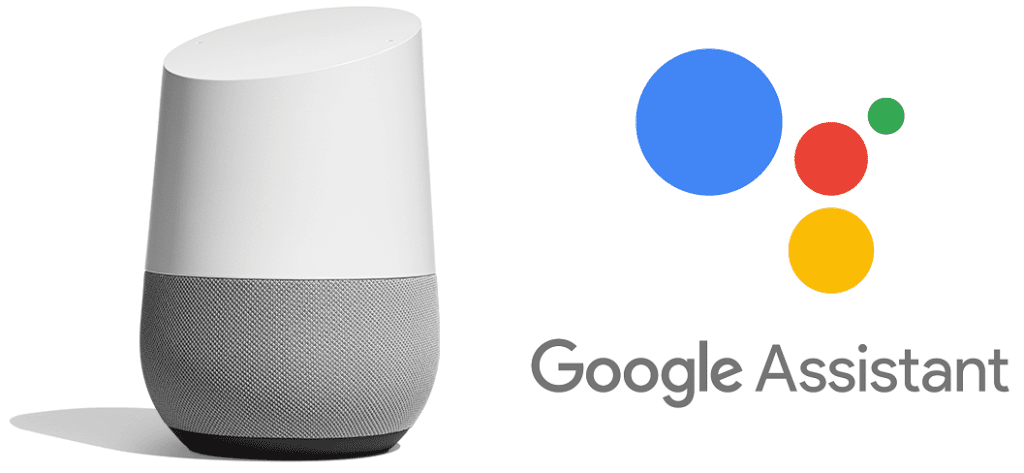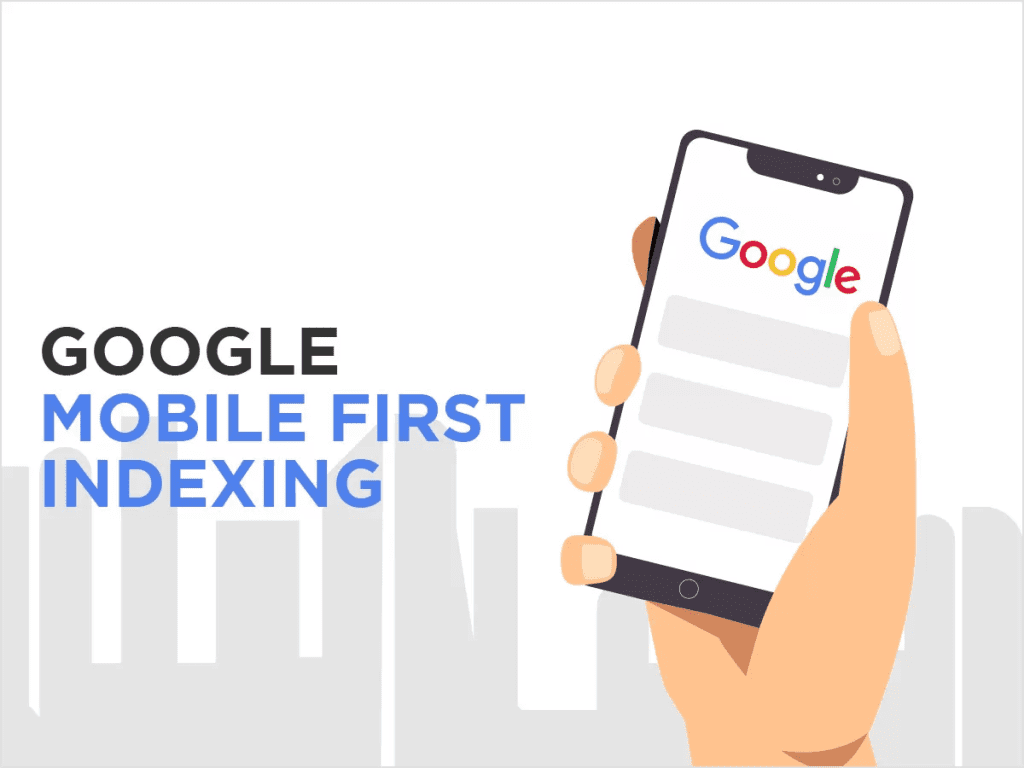Key Takeaways
- Harmonizing Content for Conversational Queries: Embrace the conversational nature of voice searches by optimizing content for natural language patterns, answering user queries directly, and aligning with the evolving dynamics of spoken interactions.
- Strategic Integration of VSO Tools: Leverage specialized tools like Semrush, AnswerThePublic, and Moz Local to orchestrate a symphony of insights. Understand user intent, identify high-performing keywords, and fine-tune local SEO efforts, ensuring businesses resonate with the preferences of voice search users.
- Continuous Adaptation in the Sonic Revolution: Recognize that voice search optimization is not a one-time endeavour but a continuous journey. Stay ahead by embracing emerging technologies, analyzing voice search analytics, and fostering a culture of learning, ensuring your business leads the orchestration of a new era in SEO.
In an era where technology continuously shapes the way we interact with information, voice search has emerged as a revolutionary force, fundamentally altering the landscape of search engine optimization (SEO).
As users increasingly turn to voice-activated virtual assistants and smart devices to navigate the digital realm, businesses must adapt their strategies to stay ahead in the competitive online space.
In this comprehensive exploration, we delve into the realm of Voice Search Optimization (VSO) and its profound applications in the dynamic world of SEO.

From Typing to Talking: The Evolution of Search Habits
The days of traditional keyboard searches are fading, making way for the era of voice-activated exploration.
Users now ask questions, issue commands, and seek information simply by speaking into their devices.
This shift is not merely a trend; it’s a transformative wave that demands the attention of businesses and digital marketers.
Understanding the nuances of voice search optimization is not just an option; it’s a strategic imperative for those who wish to thrive in the digital marketplace.
Why Voice Search Matters in SEO
As search engines refine their algorithms to better understand and respond to voice commands, the significance of optimizing for voice searches becomes increasingly evident.
Beyond the convenience it offers users, voice search optimization has become a pivotal factor in determining a website’s visibility, rankings, and overall success in the competitive SEO landscape.
This exploration will unravel the intricacies of voice search optimization and provide actionable insights for businesses seeking to enhance their online presence.
Navigating the SEO Soundscape: A Preview
In the subsequent sections, we will dissect the very essence of voice search optimization—how it works, why it matters, and the strategic steps businesses can take to leverage its potential.
From understanding the mechanics of voice recognition technology to implementing tailored strategies for local search, this journey through the SEO soundscape promises to equip you with the knowledge and tools needed to thrive in an era dominated by the spoken word.
Join us as we embark on this deep dive into the world of Voice Search Optimization and unveil its transformative applications in the realm of SEO.
But, before we venture further, we like to share who we are and what we do.
About AppLabx
From developing a solid marketing plan to creating compelling content, optimizing for search engines, leveraging social media, and utilizing paid advertising, AppLabx offers a comprehensive suite of digital marketing services designed to drive growth and profitability for your business.
AppLabx is well known for helping companies and startups use SEO to drive web traffic to their websites and web apps.
At AppLabx, we understand that no two businesses are alike. That’s why we take a personalized approach to every project, working closely with our clients to understand their unique needs and goals, and developing customized strategies to help them achieve success.
If you need a digital consultation, then send in an inquiry here.
What Is Voice Search Optimization And Its Application in SEO?
- Understanding Voice Search Optimization
- How Voice Search Works
- Benefits of Voice Search Optimization in SEO
- Key Strategies for Voice Search Optimization
- Voice Search Analytics
- Voice Search Optimization Tools
1. Understanding Voice Search Optimization
The rapid rise of voice-activated virtual assistants like Siri, Google Assistant, and Alexa has ushered in a new era of search behavior, compelling businesses to comprehend the nuances of Voice Search Optimization (VSO).
In this section, we delve into the mechanics of voice search, exploring the distinctions between traditional and voice-activated queries and understanding the impact of voice search on SEO rankings.

Definition and Explanation of Voice Search
- Defining Voice Search: Voice search is a technology that allows users to perform searches on the internet using spoken language rather than typing queries into a search engine.
- The Rise of Voice-Activated Devices: The proliferation of smart speakers and virtual assistants has fueled the adoption of voice search. In 2022, there were around 142 million users of voice assistants in the United States, nearly half of the country’s population, showcasing the widespread integration of voice-activated technology into daily life.
Key Differences Between Traditional and Voice Search Queries
- Conversational Nature of Voice Queries: Voice searches tend to be more conversational and natural in tone compared to typed queries. Users are more likely to pose complete questions or sentences when speaking to their devices, such as “What’s the weather like today?” instead of typing fragmented keywords like “weather today.”
- Longer Search Queries: Voice queries are often longer than their typed counterparts. According to Backlinko, the typical voice search result is only 29 words in length, emphasizing the need for content that caters to more extensive and context-rich queries.
2. How Voice Search Works
Understanding the mechanics behind voice search is paramount for businesses aiming to optimize their online presence for this emerging trend.
In this section, we unravel the intricacies of voice recognition technology, explore the role of virtual assistants, and delve into the significance of natural language processing in shaping the future of voice-activated searches.

Explanation of Voice Recognition Technology
- Speech-to-Text Conversion: Voice search operates on sophisticated speech recognition algorithms that convert spoken words into text. This process involves breaking down the audio signals into phonemes and matching them against a vast database of language patterns.
- Natural Language Understanding (NLU): NLU is a pivotal component of voice recognition technology, enabling systems to comprehend the contextual nuances of human language.
Advanced machine learning algorithms analyze syntax, semantics, and intent, allowing virtual assistants to decipher user queries with a high degree of accuracy. - Improvements in Accuracy: Over the years, the accuracy of voice recognition technology has seen remarkable improvements.
Microsoft claims to have a word error rate of 5.1%. Google boasts a WER of 4.9%, showcasing the strides made in enhancing the precision of voice-activated systems.
Overview of Virtual Assistants
- Siri – Apple’s Virtual Assistant: Siri, introduced by Apple, was one of the pioneering virtual assistants. Launched in 2011, Siri utilizes natural language processing and machine learning to understand and respond to user commands.
Siri is available on over 1.5 billion devices worldwide.

- Google Assistant – The AI Powerhouse: Google Assistant, powered by Google’s formidable AI capabilities, is another prominent virtual assistant.
Integrated into Android devices and available on various platforms, Google Assistant responds to voice commands, retrieves information, and performs tasks for users.

- Alexa – Amazon’s Voice Service: Alexa, the virtual assistant by Amazon, is a central component of Amazon Echo devices.
Amazon is the leading vendor in the global smart speaker market, having a market share of 28 per cent in the first quarter of 2022. Alexa’s capabilities extend beyond basic voice commands to encompass smart home control, music playback, and even third-party skill integrations.

Importance of Natural Language Processing in Voice Search
- Contextual Understanding: Natural Language Processing (NLP) enables virtual assistants to grasp the context and intent behind user queries. This contextual understanding is crucial for delivering relevant and accurate results. Google’s BERT (Bidirectional Encoder Representations from Transformers) algorithm, introduced in 2019, significantly enhanced the search engine’s ability to comprehend the context of user queries.
- Conversational Search Queries: With the prevalence of voice search, users tend to frame queries conversationally. NLP algorithms facilitate the interpretation of these conversational nuances, allowing virtual assistants to provide more human-like responses.
- Semantic Search and Entity Recognition: Semantic search, driven by NLP, focuses on understanding the meaning behind words rather than relying solely on keywords. Entity recognition, a key component of semantic search, helps identify and categorize entities (e.g., people, places, events) within a query, contributing to more accurate and context-aware results.
3. Benefits of Voice Search Optimization in SEO
Voice Search Optimization (VSO) isn’t just a technological trend; it’s a transformative force that can redefine a website’s visibility and impact its SEO performance.
In this section, we explore the numerous advantages of incorporating voice search optimization into your SEO strategy, backed by real-world examples and statistical insights.

Enhanced User Experience and Convenience
- Effortless Interaction: Voice search streamlines the user experience by eliminating the need to type queries manually. This hands-free approach appeals to users seeking quick and convenient information retrieval.
- Accessibility for All Users: Voice-activated technology caters to a diverse audience, including those with limited mobility or visual impairments. By optimizing for voice search, businesses contribute to a more inclusive online environment, expanding their reach to a broader demographic.
Increased Website Visibility and Traffic
- Featured Snippets and Position Zero: Voice search often relies on featured snippets, and securing position zero in search results becomes paramount.
According to a study, approximately 12.29% of search queries have featured snippets, providing an opportunity for websites to gain prominence in voice-activated searches. - Higher Click-Through Rates: Websites appearing in featured snippets tend to experience higher click-through rates.
A report indicates that 8.6% of clicks go to featured snippets, showcasing the potential for increased traffic through voice search optimization.
Improved Local Search Results
- Location-Based Queries: Voice searches are often geographically targeted, with users seeking information about local businesses, services, or events.
Optimizing for local SEO is crucial, as evidenced by a Google study revealing that 76% of people who search on mobile for something nearby visit a business within a day. - Business Visibility through Local Listings: Ensuring accurate and updated information in online local listings, such as Google My Business, enhances the likelihood of appearing in voice-activated local search results.
Businesses with optimized local listings stand to benefit from increased visibility in their respective regions.
Strategic Content Alignment
- Optimizing for Long-Tail and Conversational Keywords: Voice searches often involve more extended and conversational queries. By tailoring content to align with these natural language patterns, businesses can optimize for long-tail keywords.
A study found that nearly 70 per cent of requests to Google Assistant are delivered in natural language. - Content Relevance to User Intent: Understanding user intent becomes crucial in voice search optimization. By creating content that directly addresses user queries, businesses increase the likelihood of their website being recommended by voice-activated virtual assistants.
Adapting to Mobile-First Indexing
- Mobile-Friendly Websites: As the majority of voice searches occur on mobile devices, ensuring mobile-friendly websites is imperative. Google’s mobile-first indexing prioritizes the mobile version of a website for indexing and ranking, making mobile optimization a critical aspect of the voice search strategy.

- User Satisfaction and Engagement: Mobile-friendly websites contribute to a positive user experience, impacting factors such as page load times and overall responsiveness.
Studies have shown that 53% of visits are abandoned if a mobile site takes longer than 3 seconds to load.
4. Key Strategies for Voice Search Optimization
In the dynamic landscape of SEO, adapting strategies to cater to the rising prevalence of voice search is essential.
In this section, we explore actionable strategies for Voice Search Optimization (VSO), encompassing keyword optimization, content creation, and mobile-friendly considerations, supported by real-world examples and statistical insights.

Optimizing for Conversational and Long-Tail Keywords
- Understanding Natural Language Patterns: Voice searches often mirror natural language patterns, with users posing queries in a conversational tone.
Optimizing for conversational keywords involves understanding user intent and crafting content that directly addresses the way people naturally speak. - Utilizing Long-Tail Keywords: Long-tail keywords are crucial in voice search optimization as they align with the detailed and context-rich nature of voice queries.
Businesses can leverage tools like AnswerThePublic or explore the “People Also Ask” section in Google search results to identify relevant long-tail queries and integrate them into their content strategy.
Creating Content that Answers Specific User Queries
- FAQ-Based Content: Structuring content in a Frequently Asked Questions (FAQ) format enhances its relevance to voice search queries.
By anticipating and addressing common user questions, businesses increase the likelihood of their content being featured as a direct response to voice-activated inquiries. - Featured Snippet Optimization: Content optimized for featured snippets stands a better chance of being selected as the voice search result. By providing concise and informative answers, businesses position themselves as authoritative sources.
According to Ahrefs, 40.7% of voice search answers come from the featured snippet.
Ensuring Mobile-Friendliness and Fast Page Loading Times
- Responsive Web Design: Given that a significant portion of voice searches occurs on mobile devices, having a responsive and mobile-friendly website is imperative.
Google’s mobile-first indexing prioritizes mobile versions of websites, making mobile optimization a critical aspect of the voice search strategy. - Optimizing Page Speed: Page loading times directly impact user experience, particularly on mobile devices. Google recommends that pages should load within three seconds to prevent user abandonment.
Businesses can use tools like Google PageSpeed Insights to assess and enhance their page loading speed.
Leveraging Local SEO Techniques for Voice Search
- Claiming and Optimizing Google My Business Listings: Voice searches often have local intent, making Google My Business (GMB) optimization crucial.
By claiming and optimizing their GMB listings with accurate business information, including address, phone number, and business hours, businesses enhance their visibility in local voice search results.

- Localized Content Creation: Creating content with a focus on local events, landmarks, and community-related information aligns with the localized nature of many voice queries.
Businesses can incorporate location-specific keywords and references to establish relevance in their target regions.
5. Voice Search Analytics
Understanding the impact and performance of voice search on your website is crucial for refining your SEO strategies.
In this section, we explore the importance of voice search analytics, the tools available for monitoring performance, and how businesses can leverage data-driven insights to stay ahead in the rapidly evolving landscape.

Monitoring and Analyzing Voice Search Performance
- Implementing Voice Search Tracking Tools: Utilizing tools that specifically track voice search queries is fundamental for gaining insights into performance.
Google Search Console, for instance, provides a section dedicated to “Search Appearance” where businesses can analyze the queries that trigger voice search results.

- Identifying Voice Search Queries: By accessing voice search reports in analytics tools, businesses can identify the specific queries that users are vocalizing. This information is invaluable in tailoring content to align with prevalent user interests and search patterns.
Utilizing Tools for Tracking Voice Search Queries
- Google Analytics Voice Search Reports: Google Analytics allows businesses to delve into the performance of voice search queries through dedicated reports.
By navigating to the “Behavior” section and selecting “Site Search,” businesses can access insights into how users interact with their site via voice searches. - Voice Search Performance in Google Search Console: Google Search Console provides a detailed breakdown of search queries that trigger voice search results.
By examining the “Search Appearance” section, businesses can identify the queries, pages, and devices associated with voice-activated interactions.

Adjusting SEO Strategies Based on Voice Search Analytics
- Identifying High-Performing Keywords: Analyzing voice search analytics helps identify keywords that perform well in voice-activated queries.
By recognizing these high-performing keywords, businesses can optimize their content and SEO strategies to target specific voice search trends. - Refining Content for User Intent: Understanding user intent through voice search analytics allows businesses to tailor their content to better meet the needs of their audience.
By creating content that aligns with prevalent user intents, businesses increase their chances of being featured in voice search results.
6. Voice Search Optimization Tools
In the ever-evolving landscape of SEO, leveraging advanced tools is imperative for businesses seeking to optimize their online presence for voice search.
In this section, we explore a range of Voice Search Optimization (VSO) tools, each designed to provide valuable insights and streamline the process of aligning content with the dynamic demands of voice-activated search.

Overview of Voice Search Optimization Tools
- Semrush Voice Search Analytics: Semrush, a comprehensive SEO tool, offers specific features for voice search analytics.
Businesses can utilize Semrush to identify voice search keywords, assess competition in voice search results, and gain insights into user intent through valuable analytics data. - Google’s Dialogflow: Google’s Dialogflow is a natural language processing platform that enables businesses to build conversational interfaces such as chatbots and voice-activated applications.
Leveraging Dialogflow allows businesses to create more natural and intuitive interactions, aligning with the conversational nature of voice searches.

Keyword Research Tools for Voice Search Optimization
- AnswerThePublic: AnswerThePublic is a valuable tool for uncovering questions and phrases users are likely to voice when searching.
By entering a keyword, businesses can generate a visual representation of related queries, aiding in the identification of potential voice search keywords. - LongTail Pro: LongTail Pro specializes in identifying long-tail keywords, which are pivotal in voice search optimization. The tool assists businesses in finding low-competition keywords with high search volume, allowing for strategic integration into content.

Content Optimization Tools for Voice Search
- Clearscope: Clearscope is an AI-driven content optimization tool that helps businesses align their content with user intent.
By analyzing top-ranking pages for a given topic, Clearscope identifies relevant terms and concepts, facilitating the creation of content that resonates with voice search queries. - MarketMuse: MarketMuse utilizes AI to analyze content and identify gaps that may hinder performance in voice search.
By providing insights into the content’s relevance and comprehensiveness, MarketMuse assists businesses in creating content that is more likely to be featured in voice search results.
Local SEO Tools for Voice Search
- Moz Local: Moz Local is a tool specifically designed for local SEO optimization.
Ensuring accurate business information across online directories, Moz Local enhances a business’s visibility in local voice search results. Consistent NAP (Name, Address, Phone Number) details are critical for success. - Yext: Yext is a comprehensive location data management platform. Businesses can use Yext to update and synchronize their business information across various online platforms, ensuring consistency and accuracy for local voice search queries.
Voice Analytics and Insights Tools
- VoiceBase: VoiceBase is a voice analytics platform that provides insights into spoken words and phrases. Businesses can leverage VoiceBase to analyze call centre interactions, customer feedback, and even voice search queries.
The tool aids in understanding user behaviour and refining content strategies. - Pulse Labs: Pulse Labs focuses on voice user experience testing. Businesses can use Pulse Labs to gather user feedback on voice applications and interactions, gaining valuable insights into user preferences and expectations in the realm of voice-activated searches.
Emerging Technologies and Future Trends
- AI-Driven SEO Platforms: The future of voice search optimization may see the emergence of AI-driven SEO platforms that integrate natural language processing and machine learning.
These platforms could provide more sophisticated insights, enabling businesses to stay at the forefront of evolving voice search trends. - Voice Search Integration with Virtual Assistants: As voice search continues to evolve, integration with virtual assistants may become more seamless.
Tools that offer integration with popular virtual assistants like Siri, Google Assistant, and Alexa could become pivotal in optimizing content for a diverse range of voice-activated platforms.
Conclusion
In the vast symphony of the digital landscape, the rise of voice search stands as a transformative crescendo, reshaping the way users interact with information and altering the very fabric of Search Engine Optimization (SEO).
As we conclude our exploration into the realm of “Voice Search Optimization and Its Application in SEO,” it is evident that this sonic revolution is not a fleeting trend but a profound shift that demands the attention and adaptation of businesses in the online sphere.
Embracing the Conversational Wave
The evolution of voice search from a nascent concept to a ubiquitous feature across devices is indicative of a paradigm shift in user behaviour.
No longer confined to the clicks and taps of traditional keyboard searches, users are now engaging with their devices through natural language, posing questions, and conversationally issuing commands.
Businesses that embrace this conversational wave position themselves not just as entities that provide information but as companions in a user’s digital journey.
The Strategic Imperative of Voice Search Optimization
Voice Search Optimization (VSO) emerges not as a choice but as a strategic imperative for businesses navigating the competitive SEO landscape.
Understanding the intricacies of voice recognition technology, the nuances of natural language processing, and the dynamics of user intent becomes paramount.
The strategic alignment of content, keywords, and local SEO efforts with the demands of voice-activated searches is the compass guiding businesses toward digital resonance.
Illuminating the Path Forward
Our exploration has illuminated the path forward, unveiling key strategies for VSO that businesses can leverage to stay ahead in this dynamic soundscape.
From optimizing for conversational and long-tail keywords to creating content that directly answers user queries, businesses can strategically align their efforts with the preferences of voice search users.
Mobile-friendliness, local SEO considerations, and the integration of emerging technologies also stand as beacons guiding businesses toward an optimized and responsive digital presence.
The Orchestra of Voice Search Optimization Tools
In the toolkit for navigating this sonic revolution, a myriad of Voice Search Optimization tools orchestrate a symphony of insights and analytics.
From Semrush and Google’s Dialogflow for comprehensive analytics to specialized tools like AnswerThePublic and Moz Local for targeted strategies, businesses have an ensemble of solutions to harmonize their content with the cadence of voice-activated searches.
Unveiling the Transformative Potential
As businesses adapt to the transformative potential of Voice Search Optimization, they unlock not just visibility but a deeper connection with their audience.
Voice search is not merely about finding information; it’s about fostering a seamless and intuitive interaction that mirrors real-world conversations.
The benefits of enhanced user experience, increased website visibility, and strategic content alignment paint a canvas where businesses thrive in the evolving digital landscape.
In the symphony of SEO, where each algorithm update, user interaction, and technological advancement plays a note, voice search optimization emerges as a melodic thread weaving through the very fabric of online presence.
As businesses harmonize with this sonic revolution, they not only optimize for voice searches but also resonate with the evolving needs and preferences of their digital audience.
The journey is not just about adapting to change; it’s about leading the orchestration of a new era in SEO—a future where the spoken word is not just heard but profoundly understood.
If you are looking for a top-class digital marketer, then book a free consultation slot here.
If you find this article useful, why not share it with your friends and business partners, and also leave a nice comment below?
We, at the AppLabx Research Team, strive to bring the latest and most meaningful data, guides, and statistics to your doorstep.
To get access to top-quality guides, click over to the AppLabx Blog.
People also ask
What is voice search optimization?
Voice search optimization is the strategic process of enhancing online content to align with the preferences of voice-activated searches. It involves tailoring content for conversational language, optimizing for long-tail keywords, and adapting SEO strategies to cater to the growing trend of users interacting with devices through spoken queries.
How does voice recognition search work in SEO?
Voice recognition search in SEO involves converting spoken words into text, understanding natural language through algorithms, and processing user queries. Virtual assistants, like Siri or Google Assistant, utilize natural language processing to interpret user intent, providing relevant search results based on context and semantic understanding.
What is a voice search app?
A voice search app is a mobile application or virtual assistant platform that allows users to perform searches, ask questions, and execute commands using their voice. Examples include Siri on Apple devices, Google Assistant on Android, and Amazon’s Alexa, enabling hands-free interaction for various tasks.




































